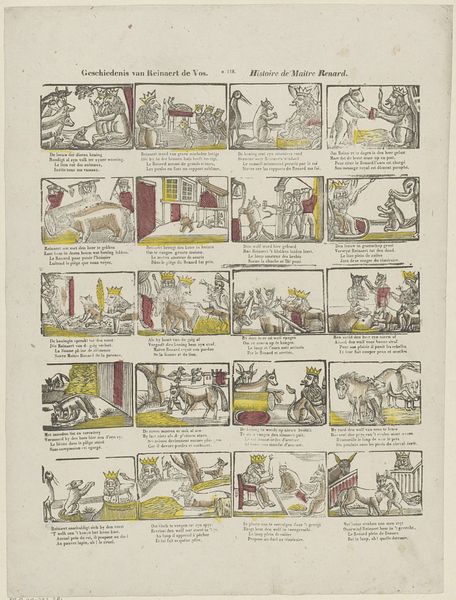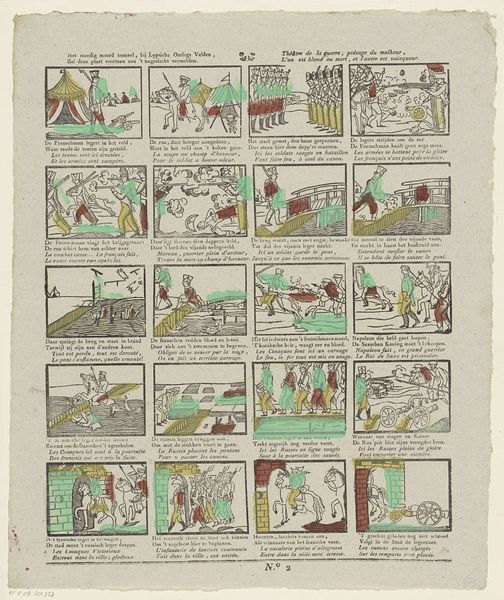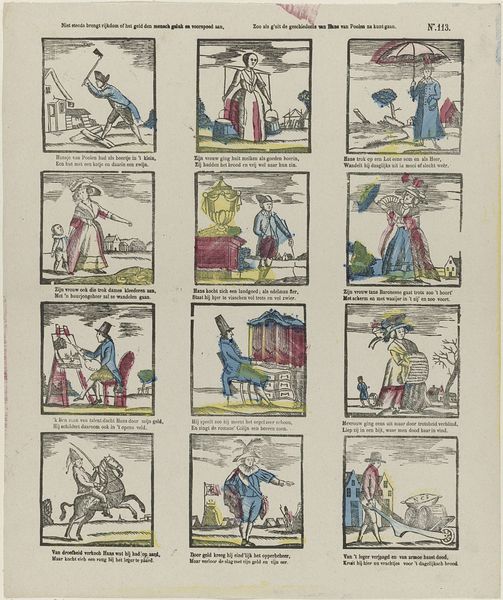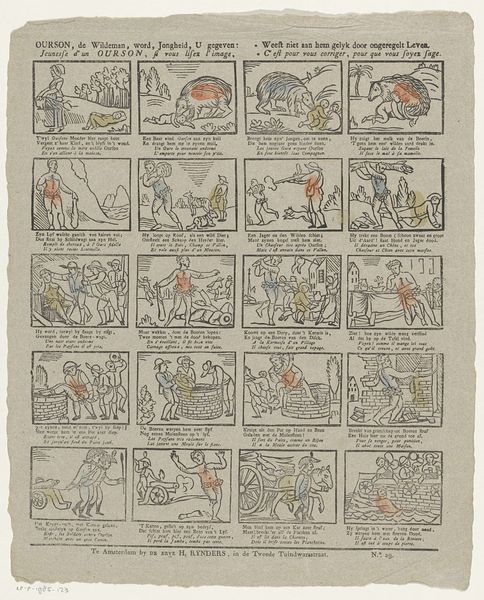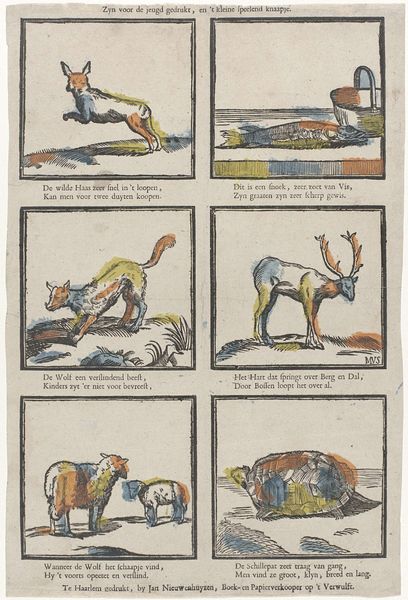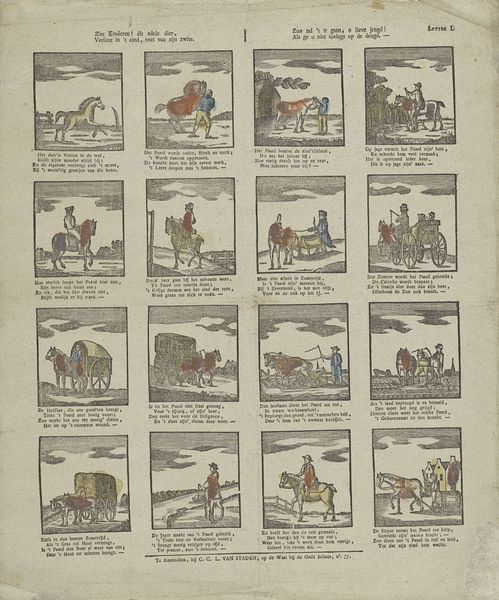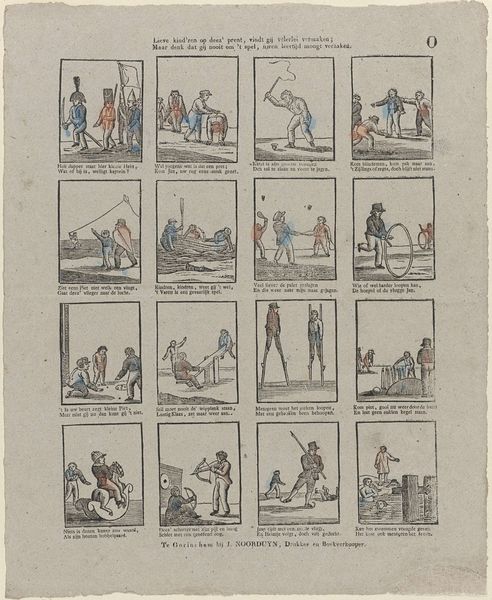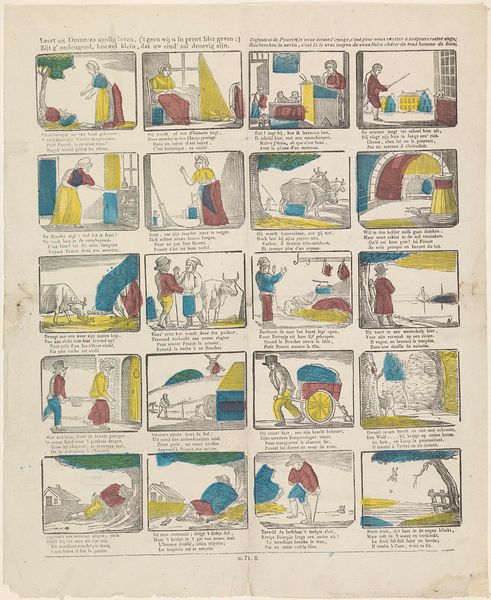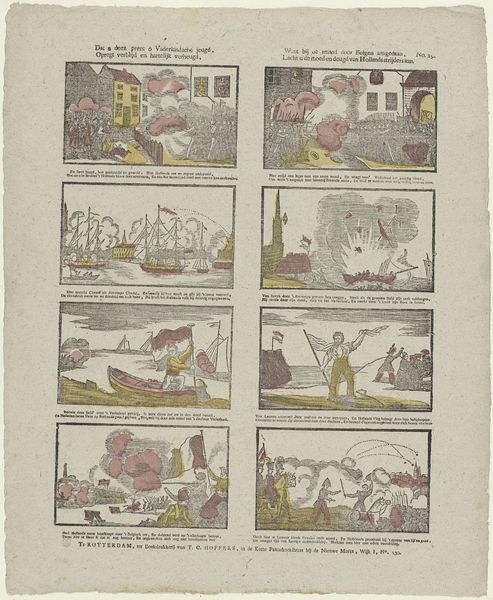
Deez' prent strek' u, o lieve jeugd, / Tot leering bij gepaste vreugd. / Daar zij u eenigzins ook meldt, / Hoe 't loon altijd ons werk vergeldt 1850 - 1870
0:00
0:00
drawing, print, engraving
#
drawing
# print
#
dog
#
genre-painting
#
engraving
Dimensions: height 368 mm, width 293 mm
Copyright: Rijks Museum: Open Domain
Curator: Here we have an engraving by Willem Bal, likely created sometime between 1850 and 1870. It's titled, rather verbosely, "Deez' prent strek' u, o lieve jeugd, / Tot leering bij gepaste vreugd. / Daar zij u eenigzins ook meldt, / Hoe 't loon altijd ons werk vergeldt". Editor: What a mouthful! The print shows twelve little vignettes, each with a short verse underneath. It feels almost like a comic strip… What can you tell me about this work? Curator: I find myself focusing on the context in which it was produced. Notice how the scenes depict common animals: dogs, cats, cows, horses, roosters. Consider this in relation to 19th-century Dutch agricultural practices and how those animal materials were exploited, processed, and then consumed. What do these depictions tell us about the perceived value of labour and nature? Editor: That’s interesting. So, you’re saying it's not just about pretty pictures of animals; it’s about thinking about the economic system around it. Like, who owned the cows, who milked them, and where did the milk go? Curator: Exactly. Even the stylistic choices, such as engraving, are tied to means of mass production and dissemination. Was this artwork intended for widespread consumption, perhaps by a growing literate population eager for accessible visuals? How might the medium shape the message? Editor: I guess I hadn't really considered it that way. So much work goes into something we see as just a children’s illustration. Curator: Precisely! Examining the "means of production," broadens our appreciation of the piece. We're acknowledging the labor embedded within the materials and techniques of its construction. Editor: Right, so much more than just a quaint children’s print. It’s really about labour, resources, and access… It makes me want to research children's book production in the 19th Century. Curator: Then our work here is done.
Comments
No comments
Be the first to comment and join the conversation on the ultimate creative platform.

